Spotlight on feedlot cattle staging
What are the best practices for establishing and maintaining feedlot cattle staging facilities? An ALFA and MLA-supported project has set out to answer that question, with a new best practice manual now available to lot feeders, producers and consultants.
Feedlot cattle staging facilities are areas adjacent to National Feedlot Accredited Scheme (NFAS) feedlots utilised for the receival and preparation of cattle prior to entering the feedlot itself. Staging facilities are also utilised during dry times to bring cattle from drought-affected areas closer to feed and water resources prior to feedlot entry. These facilities vary in terms of intensity and infrastructure.
A new publication, Best-Practice Manual for Feedlot Cattle Staging Facilities, was developed by the project team led by Matt Norton (one of the founders of AgDSA) to help industry stakeholders understand the best ways to design, construct and manage these areas to safeguard the environment and the integrity of the grain fed beef supply chain.
Feedlot cattle staging
The popularity of feedlot cattle staging has grown over the last few years. This is partially due to the necessity of these systems in the previous drought, but also due to the good animal husbandry and performance results that have been recorded when animals are prepared before induction to the feedlot.
“Although popularity is growing, feedlot cattle staging best practices are still unclear for some people in the industry,” Matt said.
“Unlike feedlots that have quite strict regulations and well-established design and management criteria, the staging facilities are still a little bit of a grey area – everyone has their ways of doing it.”
The manual has been designed to provide ideas and options to allow producers and consultants to adopt into their operations, especially during the planning, design and construction phase and will assist in mitigating environmental impacts.
“This document is about bringing together all the best design and management that’s already occurring in the industry and putting it in one spot where anyone can access it”
Finding the right information
Currently, there is limited information and research available regarding feedlot cattle staging facilities.
“There is plenty of research about the benefits of staging for animal welfare and performance, particularly for managing bovine respiratory disease (BRD), but there is less about design, management, and environmental controls,” Matt said.
He explained that more research on the topic has been done in the US, however the US feedlot industry, on average, is not as well-regulated and well-designed as the Australian industry is.
“Trying to pick and choose what has already been looked at, research-wise, as a lot of it is not relevant to the Australian context.”
During the research for the manual, there were several site visits undertaken to facilities around Australia, including family operations and corporate facilities.
“Visiting numerous operations on different scales allowed us to see who was doing what, how they are managed, and what worked.
“From visiting all the sites, we were then able to pull together a document based on what we saw across the different operations. We were also able to draw on concepts from best practice grazing and groundcover management as this is a crucial part of maintaining a feedlot cattle staging facility,” Matt said.
|
Snapshot – Lachy Brown, Pakaderinga Feedlot Pakaderinga Feedlot is a third-generation, family-owned and operated feedlot located near Kingaroy, Queensland, and will celebrate its 35th year of operation in 2025. The facilities include a 4,000-head feedlot in addition to staging facilities. Lachy Brown makes up part of the third generation and is the feedlot's current General Manager. Pakaderinga was one of the seven facilities visited in the development of the best practice manual. From a feedlot operator's point of view, Lachy believes the new manual will prove to be a useful tool for the industry. “It will help provide operators with a framework to work within and give ideas on what they may be able to use in their facilities to improve their operations,” he said. Lachy also noted the benefits this manual could have during dry times as the need for alternative options for producers becomes greater. He said this manual would provide suggestions and ideas for feedlot operators to reference. At Pakaderinga, Lachy and his team have already implemented practices to improve their feedlot staging operation, provide better welfare for cattle and have a better environmental impact. “We’ve done a lot of work improving pastures and resting paddocks. We’re trying to keep consistent ground cover to prevent erosion, which is particularly relevant to the type of country here as we have quiet sandy soil which erodes easily during heavy summer rainfall.” They have also implemented fencing around their stock dams to prevent cattle from stirring water up. “We’ve fenced off most dams and instead just run all the water through a tank and trough system,” Lachy explained. “We’ve made sure we’ve used quality feeding infrastructure, including permanent concrete feed bunks with wet weather access tracks developed throughout our internal laneway system. Through working with our nutritionist, we’ve also developed specific feeding programs to compliment different cattle types and breeds.” “We have a lot of undulating country here, so we have had to adapt and develop to what is best suited to our land and operation, working around tree clusters and waterways.” Lachy highlighted that the new manual will be a helpful tool for those in the industry or who are interested in staging, as it provides the opportunity for operators to apply the guide to best suit their operation. This is important as Australia has such vastly different landscapes from one area to the next. |
Next steps
Not only will this manual help lot feeders work towards improving their facilities, but it will also act as a catalyst to drive future research into feedlot cattle staging.
“Through the project, we’ve identified gaps where further research and information is needed moving forward. What we found during the development of this guide is great and hopefully it will spark future research,” Matt said.



